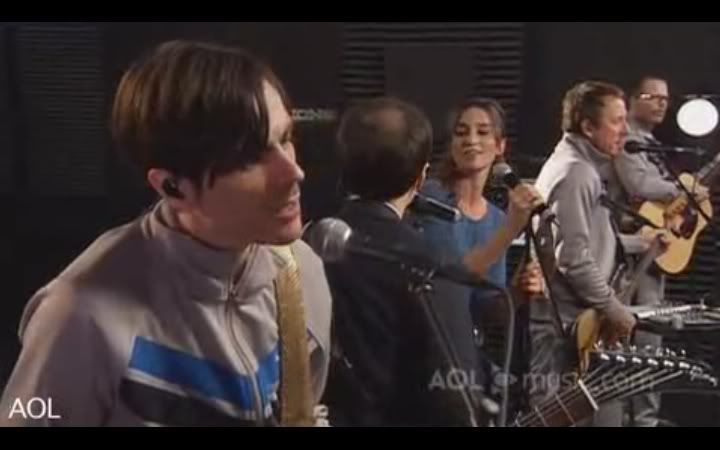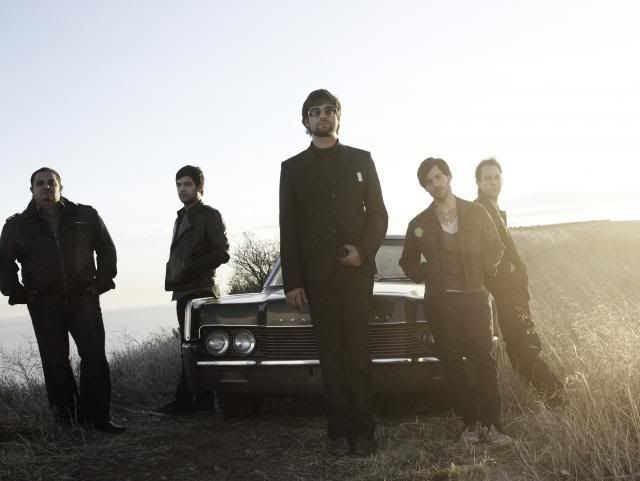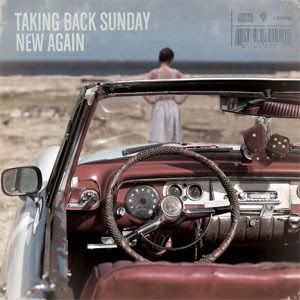Adam Levine of Maroon 5 said after their 2007 release It Won’t Be Soon Before Long that the band
might make one more album before disbanding. Their subsequent release was the
mediocre Hands All Over. I kind of had
already expected them to be done when I was watching “The Voice” with my
girlfriend and all of a sudden they were on stage premiering their new single, “Payphone,”
off of their recently announced new album Overexposed.
The song featured a verse by Wiz Khalifa... but I’ll get to that in my
track-by-track review, which follows.
The album opens with the second single, “One More Night.”
This song is stupid catchy. I hate it, but I find the “Yoouuuu-ooh-ooh-ooh ooh
ooh ooh ooh...” part stuck in my head regularly after listening (or even
thinking about) this album. The prechorus harmonies are awesome. This song,
however, other than its inexplicable catchiness, is awful.
The second track is the lead single from the album, “Payphone.”
I understand how this song got popular, but I can’t stand it. The verse is great. Adam Levine’s vocals go
so well with the drums it’s ridiculous. I’d be interested to hear this song
slowed down with just a piano backing the vocals. Also, the lyrics are so dated
it’s stupid. Kids today probably don’t even know what a payphone is. The rap
verse with Wiz Khalifa is just a stupid gimmick to create crossover hit
potential.
“Daylight,” the third track, is a beautiful song. The bridge
is the best part. Unfortunately, Adam Levine has the kind of voice that seems
not to be able to evoke emotion, so the performance doesn’t sound sincere at
all. Usually, not evoking any emotion works to his advantage, but in a song
like this, which requires a knockout, emotional performance, his method falls a
little flat. I still love this song though.
For a guy they call the “One Take Wonder” in the recording
studio, it’s an interesting choice to use auto-tune on Adam Levine in this
song. “Lucky Strike” is the second track in a row with a great bridge, but
unfortunately, in this case, the bridge doesn’t really fit with the rest of the
song, and sounds like it should lead into a screaming guitar solo. I really don’t
like the chorus of this song, as its focal point is a lyric-less melody of “Oh”s.
“The Man Who Never Lied” is a song that could easily have
been improved by removing the disco beat from behind the vocals. The lyrics are
stupid and the song is way too
repetitive. I don’t like this song. I want to, but I don’t.
The next track, “Love Somebody,” can’t decide if it’s a
dance club song or a slow dance. It’s very repetitive and uses synthesized
sounds in an overbearing way. This song again fails in part because of Levine’s
inability to sound sincere. This song would probably have worked as a power
ballad, but the band tried way too hard to make it a slow jam instead.
“Ladykiller” is a fantastic song. This song accomplishes
what Foster the People’s popular song “Pumped Up Kicks” fails to do. Levine
bounces between full voice and falsetto with such effortless facility. Mickey
Madden plays an awesome bass line that doesn’t change over the whole song, but
it actually never gets boring. It doesn’t get boring because it meshes so well
with everything the rest of the band is doing.
There’s not much to the following track, “Fortune Teller,” but
it has a really cool sounding verse. The chorus falls flat though, thanks to
its clichéd melody. The prechorus is a thing of beauty though, and I’d have
been happier with this song if that were the chorus instead.
“Sad” is a nice break from the disco-pop feel of the rest of
the album, as it features Adam Levine singing over an acoustic piano. However,
like the Killers’ “Mr. Brightside,” he sings the same note too much of the
song. That technique only works when the rest of the band is playing something
extremely interesting (see the aforementioned Killers song, “A Crow Left of the
Murder” by Incubus, and almost anything by the Strokes). The lyrics, “I’m so
sad,” are performed beautifully.
The next song, “Tickets,” starts out promising, with guitar
backing Levine’s vocals, but quickly turns to power-synth drops. The vocals are
almost addicting for most of the song, and the chorus has an awesome seventies
funk groove to it. I’m seriously tired of the “La”s and “Ooh”s by this point on
the album though, and the “La”s featured in this song are definitely annoying.
At 2:33 the song stops for no reason, very awkwardly. The lyrics are also very
strange. I don’t know what to think of this song on a whole.
The eleventh track, “Doin’ Dirt,” starts out with a stupid “She-Wolf”
howl from Levine, but quickly moves to a brilliantly fantastic verse. The song
continues its success into the chorus, wonderfully executed by the whole band. This
song is definitely a highlight on the album.
“Beautiful Goodbye,” the final track on the album, lives up to its self-proclaimed beauty. The song is carefully reminiscent of “Sunday Morning,” from their first album (albeit without the awesome breakdown). This song is a little too repetitive, but it sounds so nice that it gets a pass. It starts off with a weird second of drums that don’t need to be there, but otherwise, this song closes the album very well.
______________________________
______________________________
Overall, Maroon 5’s fourth album, Overexposed, is a letdown. The album on a whole would be better suited as a remix album. If the band had performed more of the songs on real instruments without as many digital effects or pop synthesizers, this would be a much better album. Levine too often substitutes “La” and “Ooh” for actual lyrics, and it gets very tiresome throughout the course of this album. Jesse Carmichael, who was very involved in the writing process of Maroon 5’s previous three albums, is currently on hiatus from the band, and they sorely miss his presence. The band clearly fell too hard on the success of their 2011 hit single, “Moves Like Jagger,” thinking that they could too easily extrapolate its success into an album of the same type of song. While there are highlights on this album (notably “Daylight,” “Ladykiller,” and “Doin’ Dirt”), this is not an album I would buy. Maybe the songs are better when not heard all in a row, but for now, that’s my stance on it. Please let me know how you feel in the comments below!
Standard Edition: the 12 track album as a compact disc.
Digital Edition: the 12 track album as high-quality mp3 downloads
on its street date.
Deluxe Edition: the 12 track album as either a compact disc or high
quality mp3 downloads with the bonus tracks “Wipe Your Eyes,” “Wasted Years,” and
“Kiss” (originally performed by Prince).
Deluxe Package: the 12 track album as a compact disc AND as high
quality mp3 downloads with the bonus tracks “Wipe Your Eyes,” “Wasted Years,” and
“Kiss” (originally performed by Prince), limited edition album-themed t-shirt,
and twelve postcards featuring art for each song.
To
buy Overexposed, visit http://maroon5.com/thelocker/














